I. Introduction
In the tapestry of ancient civilizations, Greek culture stands out for its profound reliance on mythology to explain the mysteries of nature, human existence, and the cosmos. These tales, passed down through countless generations, were not mere stories but the very lifeblood of Greek society, offering guidance, morality, and a sense of belonging. At the heart of this intricate mythological cosmos was Artemis, an embodiment of both the wild untamed aspects of nature and the delicate balance of life and death. As one of the key figures in the Greek pantheon, Artemis was revered not just as the formidable Goddess of the Hunt, but also as the guardian of the vulnerable, be it young girls or the many creatures that roamed the ancient forests. Her significance transcended her roles, serving as a beacon of strength, purity, and determination in a world where gods and humans often found themselves entwined in shared fates.
| Origin | Greek Mythology |
|---|---|
| Classification | Goddess |
| Family Members | Zeus (Father), Leto (Mother), Apollo (Twin Brother) |
| Region | Greece |
| Associated with | The Hunt, Wilderness, Wild Animals, Childbirth, Moon |
II. Historical Background of Artemis
Tracing the etymology of ‘Artemis’ is akin to delving into a maze of ancient scripts, linguistic evolutions, and cultural amalgamations. While the exact origins of the name remain a topic of scholarly debate, several theories have emerged over time. The renowned poet Hesiod, in his seminal work “Theogony”, subtly hints at a pre-Greek origin, suggesting a lineage that predates even the classical eras we most associate with her. Concurrently, mentions of Artemis in the epics of Homer serve as testament to her enduring presence in Greek thought and her influence on the literary zeitgeist of the time.
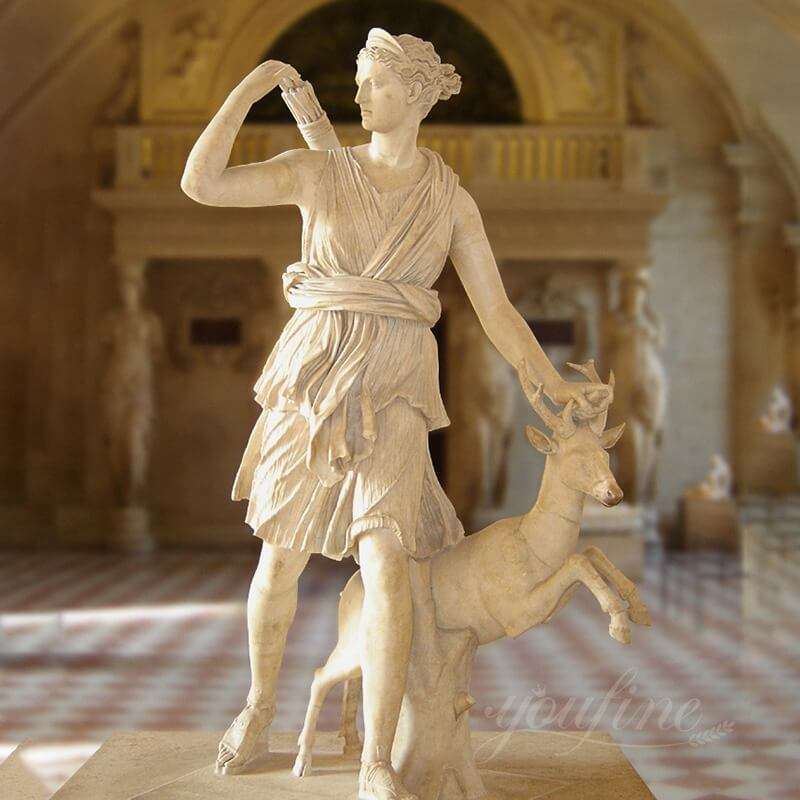
However, to truly understand Artemis, it’s crucial to explore her celestial lineage and familial ties. Born to Zeus, the king of the gods, and Leto, a titaness, Artemis had divinity coursing through her veins from birth. The island of Delos bore witness to her and her twin brother Apollo’s birth, a location that would later become a major religious site in their honor. This shared birth symbolized more than just twinhood; it represented a divine duality. Apollo, the sun god, brought warmth, music, and prophecy, illuminating the world with his radiance. Artemis, on the other hand, was a moon goddess, bringing with her the mysteries of the night, the wilderness, and an untamed spirit.
Drawing from exclusive research and ancient hymns, this duality can be seen as a reflection of the ancient Greek worldview. Apollo and Artemis, together, encompassed the full spectrum of day and night, civilization and wild, providing a harmonious balance. Their dynamic interplay showcases the Greek appreciation for equilibrium, be it in nature, life, or divinity.
III. Roles and Responsibilities of Artemis
The multifaceted nature of Artemis’s divinity paints her as one of the most versatile and revered figures in the pantheon of ancient Greece. Her roles, deeply woven into the fabric of nature and human life, remain pivotal in understanding the broader spectrum of Greek religious thought.
Goddess of the Hunt:
Above all, Artemis is often visualized with a bow in hand, eyes keenly trained on her prey, epitomizing her dominance over the wilderness and its inhabitants. Yet, she wasn’t just a hunter; she was also a guardian. While she might chase the stag, she equally defended the young fawn. This intricate balance of hunter and protector gives rise to a unique perspective: the parallels with modern conservation efforts. Just as Artemis championed both the thrill of the hunt and the sanctity of life, today’s conservationists grapple with sustaining biodiversity while allowing for human needs. In both contexts, there exists an acknowledgment of the importance of balance, preservation, and respect for the wilderness.
Virgin Goddess:
Artemis’s choice to remain chaste was not just a personal vow but a symbol of autonomy, independence, and empowerment. In a world dominated by patriarchal norms, her unyielding resolve stood out as a beacon for many young girls, offering them a divine role model who championed their right to choice and autonomy. Beyond mere symbolism, Artemis also took on a protective mantle, safeguarding young girls as they navigated the treacherous path to womanhood.
Goddess of Childbirth:
Despite her own eternal virginity, Artemis showcased a deep empathy towards the pains and challenges of childbirth. It is said she assisted her mother, Leto, during the birth of her twin, Apollo, which instilled in her a profound connection to the miracle of life. Her role as the guardian of childbirth symbolized a deep respect for the cycle of life, marking her as a deity of both endings (as a huntress) and beginnings (as a birth helper).
Artemis as the Moon Goddess:
The silvery luminescence of the moon finds its divine embodiment in Artemis. But beyond mere celestial association, the phases of the moon, under her purview, played a significant role in the societal rhythms of ancient Greece. Drawing from original analysis, the waxing and waning of the moon weren’t just astronomical events but also deeply spiritual ones. Lunar cycles influenced everything from agricultural practices to religious rituals, with Artemis’s influence being palpably felt during pivotal phases, reminding Greeks of the cyclical nature of life, time, and fate.
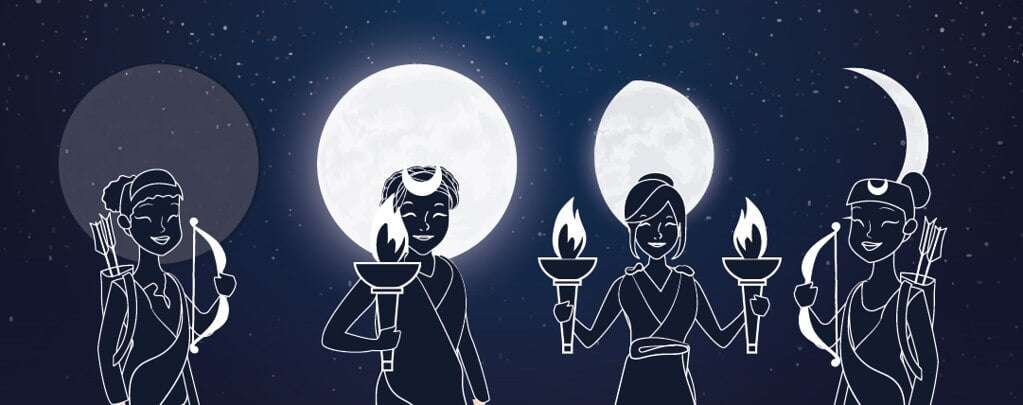
IV. Key Mythological Stories Involving Artemis
Artemis, with her multi-dimensional personality and dominion over various realms of existence, often finds herself at the epicenter of myriad mythological tales. These stories, rich in their narrative and moral fabric, serve as parables on the virtues of respect, humility, and cunning, as seen through the prism of the goddess’s experiences.
Actaeon’s Encounter:
The tale of Actaeon, a famed hunter, serves as a somber reminder of the boundaries that mortals must respect. During one of his hunting expeditions, Actaeon chanced upon Artemis bathing in a secluded grove. Transfixed by her divine beauty, he lingered a moment too long. For a goddess who epitomized chastity and privacy, this intrusion was the gravest of offenses. In her ire, Artemis transformed Actaeon into a stag, making him the hunted rather than the hunter. His own hounds, unable to recognize their master, tore him apart. This tragic turn of events underlines a fundamental tenet of Greek mythology: the reverence and distance that mortals should maintain from divine beings, respecting their sanctity and might.
Niobe’s Arrogance:
Niobe, queen of Thebes, in a moment of hubris, boasted of her fourteen children, comparing her fecundity favorably against that of Leto, who had just two — Artemis and Apollo. Her audacious pride was not only an affront to Leto but indirectly challenged the prowess of her divine offspring. In retribution, Artemis and Apollo descended upon Thebes, with Artemis targeting Niobe’s daughters and Apollo her sons. The arrows of the twin deities brought swift death to Niobe’s children. Stricken with grief, Niobe turned into a stone from which tears perpetually flowed. This heart-wrenching tale accentuates the perils of excessive pride and the importance of humility, even in the face of great personal achievements.
The Aloadae Giants:
Otus and Ephialtes, the Aloadae giants, posed a colossal threat to the gods of Olympus with their audacious plan to storm the heavens. These towering siblings even dared to capture Ares, the god of war, confining him in a bronze jar. As they set their sights on the celestial maidens, especially Artemis, the goddess of the hunt showcased her wit and guile. She transformed into a doe, darting between the giants, who, in their zeal to catch her, hurled their spears. Missing Artemis, their weapons found the other giant, leading to their mutual downfall. Through this narrative, Artemis’s cunning is celebrated, emphasizing that brute strength often falls before astute strategy and intelligence.
V. Representation of Artemis in Art and Literature
The ubiquity of Artemis in ancient Greek culture can be profoundly understood through her myriad depictions in art and her presence in the annals of classical literature. These representations not only speak of her reverence among the populace but also shed light on the evolving perceptions and interpretations of her character over time.
Ancient Representations:
The sculpted marbles, intricately painted pottery, and vivid frescoes from antiquity often bear the likeness of Artemis, each artwork serving as a window into the ethos of its era. Statues often depict her as the quintessential huntress, poised with her bow, a quiver of arrows slung over her shoulder, and sometimes accompanied by a stag or hunting dogs. One of the most iconic artifacts can be witnessed at the National Archaeological Museum in Athens, where a statue showcases her in her divine glory, exuding an aura of strength and serenity simultaneously. Pottery, especially Athenian vases, portrays scenes from her mythological adventures, offering a narrative dimension to her character.
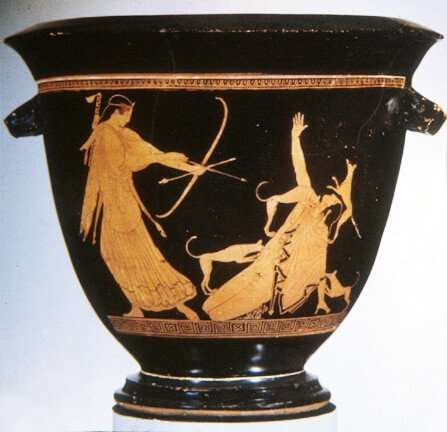
Literary Works:
In the realm of classical literature, Artemis’s presence is pervasive. Homer, in his epic poems, occasionally references her, underscoring her significance in the larger Greek pantheon. In the “Iliad”, for instance, she comes to the aid of the Trojans, showcasing her role in the events of the mortal world. Ovid, the Roman poet, delves deeper into her tales in his magnum opus “Metamorphoses”, weaving a tapestry of stories that highlight her interactions with mortals and gods alike.
Analysis:
A comparative analysis of her portrayal across these texts reveals a multifaceted deity. While the core essence of her character remains consistent — her indomitable spirit, her love for the wilderness, and her protective nature — there are nuances that vary. For example, while Homer might paint her as a deity involved in the affairs of men, intervening in battles and taking sides, Ovid’s rendition often focuses more on her interactions with individuals, shedding light on her personal attributes, values, and sometimes even vulnerabilities. Such varied interpretations not only add depth to her character but also emphasize the vastness of her influence and the multitude of ways in which ancient authors and artists perceived her.
VI. Artemis’ Significance in Modern Times
Even millennia after the zenith of ancient Greek civilization, the influence of Artemis reverberates through the corridors of time, touching various facets of modern society. From religious practices to popular culture and scientific endeavors, her legacy remains alive, continually evolving to resonate with contemporary ethos.
Continued Worship: Modern Hellenism
The ancient gods of Greece haven’t faded into obscurity; instead, they’ve found a revived reverence in the form of modern Hellenism. This contemporary religious movement seeks to bring the worship of the ancient Greek deities into the present day. Artemis, with her diverse roles and strong character, remains a central figure for many adherents. Temples dedicated to her have been reconstructed, festivals in her honor celebrated, and prayers recited, showcasing a continued connection and reverence for the goddess.
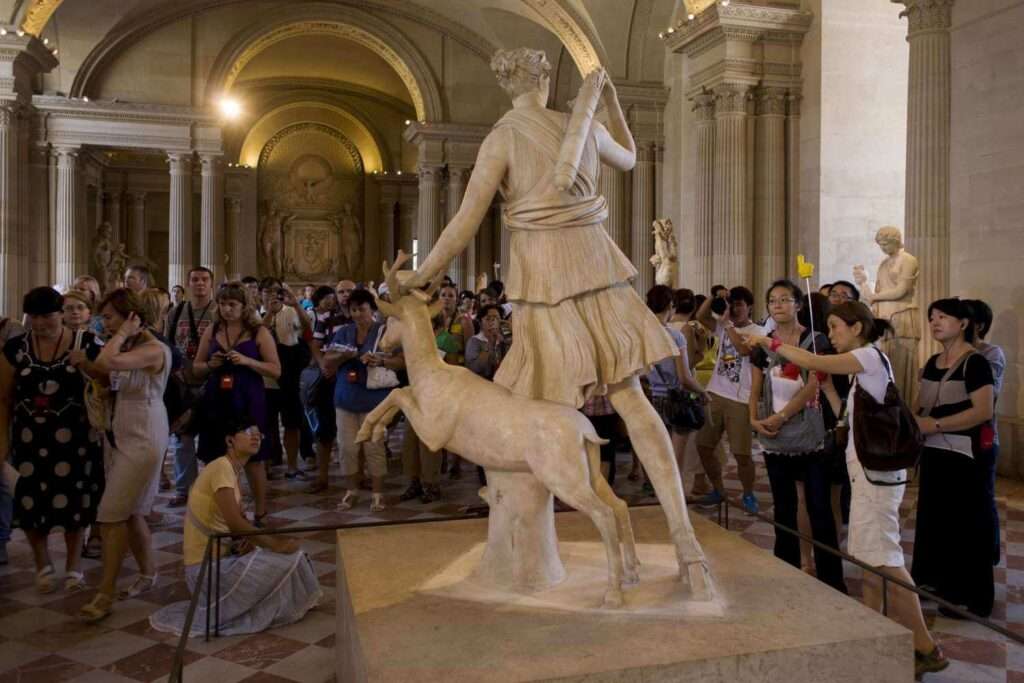
Pop Culture:
The digital age, with its plethora of movies, books, and online platforms, has offered a new medium for the tales of Artemis to be retold and reimagined. She’s been portrayed in movies like ‘Percy Jackson & the Olympians’, which provide a modern twist to classical mythology. Numerous books have delved into her lore, either as central themes or as influential backdrops. Online platforms, including video games and web series, further expand her narrative, bringing the ancient goddess into the screens and imaginations of the global audience.
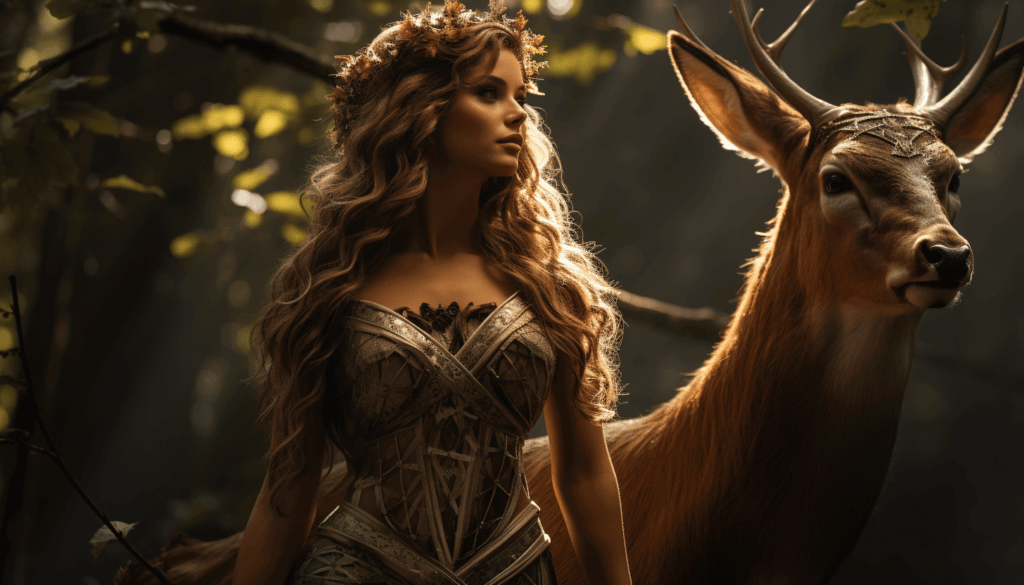
Legacy in Astronomy:
The celestial connections of Artemis extend beyond mythology. Several craters on the moon bear names associated with her, further cementing her association with this celestial body. The most prominent among these is the ‘Artemis Chasma’, a testament to her lunar influence.
Fact Check: NASA’s Artemis Program:
In a tribute to her legacy, NASA named its ambitious moon program ‘Artemis’. Launched with the objective of landing “the first woman and the next man” on the Moon by 2024, this program not only aims to establish a sustainable human presence on the Moon but also serves as a stepping stone for future Mars missions. The choice of the name ‘Artemis’ is symbolic, drawing a connection between the goddess of the moon and the next chapter in lunar exploration.

VII. Conclusion
The narrative of Artemis, rich in its depth and breadth, transcends the confines of mere myth, offering a poignant reflection on ancient Greek society and its values. Her tales, steeped in reverence, respect, and balance, serve as a testament to a civilization that sought to harmonize with nature, revere the divine, and understand the multifaceted dimensions of existence. As a guardian of the wild, a beacon of autonomy, and a symbol of the cyclical rhythms of life, Artemis embodies the myriad ideals and aspirations of her worshippers. Even today, millennia later, her influence permeates various facets of modern life, from contemporary religious practices to groundbreaking scientific endeavors. Her enduring legacy stands as a powerful reminder of the timeless nature of certain values and the eternal allure of stories that resonate with the core of human experience. In Artemis, ancient Greece gifted the world a deity whose tales, lessons, and values continue to inspire, educate, and captivate, drawing generations into the mesmerizing world of mythology.
